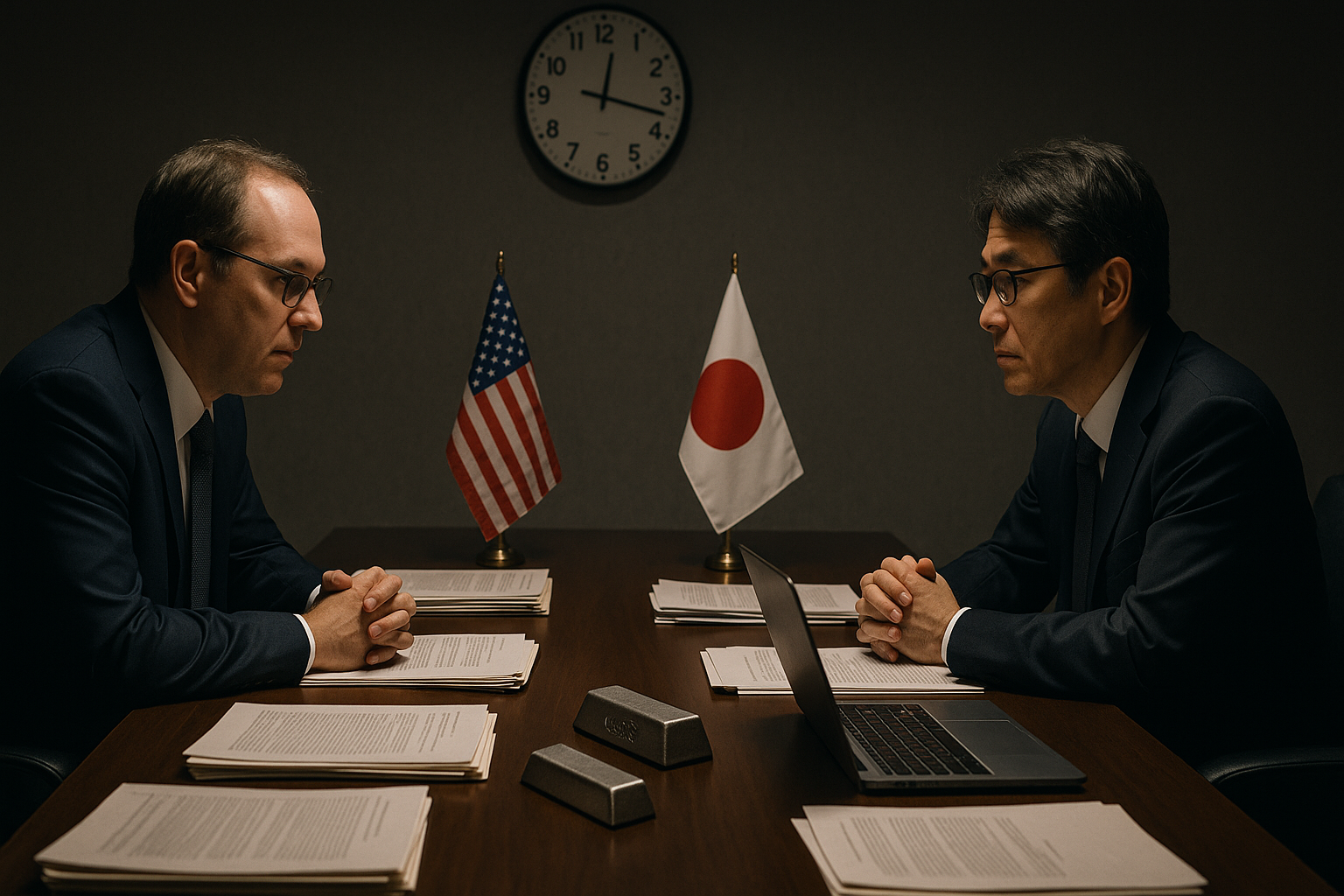The Japanese and American trade teams are burning the midnight oil this week, engaged in what diplomatic insiders call "intensive negotiations" but what looks to everyone else like a panicked scramble to beat a July 9 deadline on tariff decisions.
Look, we've all been here before. Two major economies, both perfectly aware of issues for months, suddenly realize the calendar has nearly run out. Classic international relations, really.
I've covered trade disputes since the WTO was still finding its footing, and there's a predictable rhythm to these eleventh-hour talks. First comes posturing, then private concessions, and finally—if we're lucky—a joint statement filled with enough diplomatic fudge to give everyone political cover back home.
What makes this particular showdown worth watching? It's the perfect storm of economic necessity and political maneuvering.
Japan desperately wants relief from those Section 232 tariffs on steel and aluminum (remember those? slapped on during the previous administration under "national security" justifications that raised more than a few eyebrows). Meanwhile, American negotiators are obsessed with preventing what they call "transshipment"—basically, Chinese metals sneaking through Japan to bypass U.S. restrictions.
"We're making progress," said one Japanese official I spoke with yesterday, though his tight smile suggested otherwise. "The conversations remain productive."
Translation: nobody's stormed out of the room yet.
Playing Chicken, Pacific Style
The fascinating thing about watching these negotiators work (and I've had a front-row seat at several sessions over the years) is how they manage multiple considerations simultaneously. It's like three-dimensional chess, except the board keeps changing.
Japan's automotive sector has been quietly applying enormous pressure behind the scenes. Their supply chains cross the Pacific more times than a transoceanic cable, and even small disruptions can cascade into major headaches.
An executive at one of Japan's largest automakers told me last week, "We've... we've already begun contingency planning, but honestly, we're hoping common sense prevails." He paused, then added with a hint of frustration, "These things should have been settled months ago."
No kidding.
The July 9 deadline wasn't chosen arbitrarily—it's when the current temporary arrangement expires. Without a new deal, we're looking at an automatic reversion to Trump-era tariff levels. Not exactly the economic stability businesses have been begging for.
Beyond the Numbers
What's really at stake here goes far beyond specific tariff percentages (though those matter enormously to affected industries).
These negotiations are quietly establishing patterns for how allied democracies handle economic relationships in what many are calling a new era of "friendshoring" and supply chain security. The precedents set here will echo through discussions on everything from critical minerals to semiconductor manufacturing.
And yet... financial markets seem remarkably unfazed by the whole affair. Either traders have supreme confidence in eventual resolution, or they've determined the economic impact will be limited. Sometimes I wonder if the market's collective wisdom represents genuine insight or just shared delusion. We'll find out soon enough.
I spoke with several industry representatives who've been briefed on the talks. None would speak on record (typical), but the general consensus seems to be that both sides are looking for a face-saving compromise.
"There's too much at stake politically for either side to walk away empty-handed," one American manufacturing association director told me. "But there's also—and I can't stress this enough—genuine disagreement on some fundamental approaches."
The Bigger Picture
While we're all fixated on steel and aluminum (not exactly sexy topics, I admit), there's a more profound shift happening in global trade.
The post-Cold War era of relatively unfettered trade liberalization is fading. In its place? Something more cautious, more security-minded, and—let's be honest—more protectionist.
Japan and the U.S. aren't just haggling over metal; they're testing how resilient their economic partnership remains in a world where national security concerns increasingly drive trade policy. That partnership has weathered plenty of storms since the 1980s trade tensions (anyone old enough to remember when "Japan, Inc." was America's big economic bogeyman?).
The negotiators know this history. They understand the symbolic weight their decisions carry.
As the deadline approaches, the pace has intensified. Marathon sessions, technical working groups meeting simultaneously, and the inevitable last-minute intervention by higher political authorities—it's all part of the dance.
Meanwhile, workers and executives in affected industries wait, wonder, and prepare for multiple scenarios. The human cost of this uncertainty doesn't show up in economic models, but it's real nonetheless.
July 9 looms large. And somewhere in a nondescript conference room littered with takeout containers and diplomatic briefing papers, the future of an important piece of the global trading system is being decided—one technical specification at a time.




